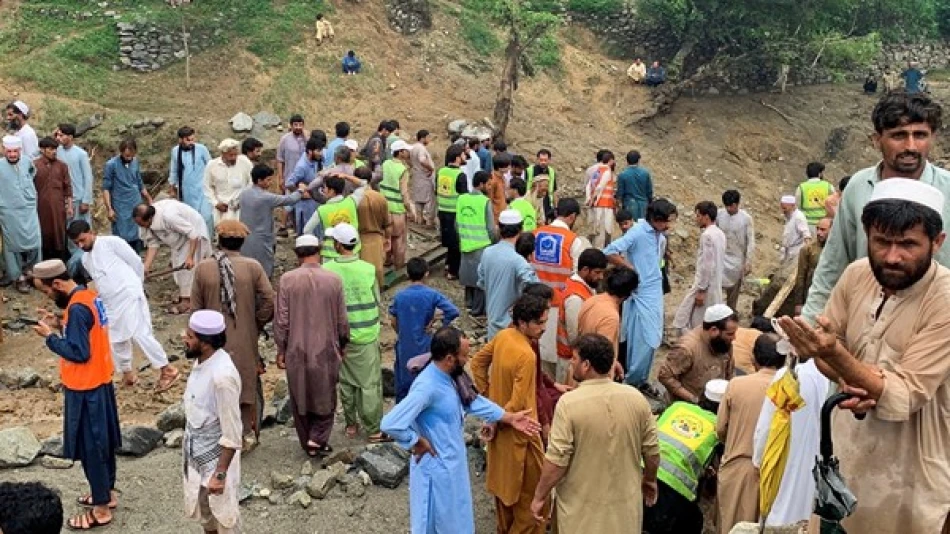
Pakistan Battles Devastating Monsoon Floods: Death Toll Soars
Pakistan's Monsoon Crisis Deepens as 194 Die in 24 Hours, Climate Change Blamed
Pakistan faces its deadliest monsoon season in recent memory as torrential rains claimed 194 lives in just 24 hours, bringing the total death toll to over 320 since the season began. The mountainous Khyber Pakhtunkhwa province bore the brunt of the devastation, with scientists pointing to climate change as the driving force behind increasingly severe weather patterns that threaten the country's 255 million inhabitants.
Northern Provinces Bear the Brunt of Nature's Fury
The mountainous terrain of northern Pakistan proved particularly vulnerable to the latest deluge. Khyber Pakhtunkhwa province recorded 180 deaths, while Pakistan-administered Kashmir saw nine fatalities and the northern Gilgit-Baltistan region reported five deaths, according to disaster management authorities.
Most victims died from flash floods and house collapses, highlighting the inadequate infrastructure that leaves Pakistan's rural communities exposed to extreme weather. The crisis deepened when a rescue helicopter crashed while attempting to reach landslide-affected areas, killing five people including two pilots.
Emergency Declarations and Government Response
Regional authorities declared the severely affected mountainous districts of Buner, Bajaur, Mansehra, and Battagram as disaster zones. Chief Minister Ali Amin Gandapur announced Saturday as a day of mourning, with national flags to fly at half-mast across the province and official honors for the deceased.
The meteorological department issued warnings for continued heavy rainfall in northwestern regions, urging residents to avoid "unnecessary presence in risk-prone areas."
A Season of Unprecedented Intensity
This year's monsoon season has defied historical patterns, starting earlier than usual and expected to last longer. Syed Muhammad Tayyab Shah, representing the National Disaster Management Authority, warned that rainfall will intensify over the next 15 days, particularly between August 16-30.
The numbers paint a stark picture of escalation. Punjab province, home to roughly half of Pakistan's population, recorded a 73% increase in rainfall compared to the previous year in July alone. The death toll has already exceeded that of entire previous monsoon seasons.
Historical Context: Pakistan's Climate Vulnerability
Pakistan ranks among the world's most climate-vulnerable nations, despite contributing less than 1% of global carbon emissions. The 2022 monsoon season offers a sobering comparison—floods covered one-third of the country and killed 1,700 people, causing economic losses exceeding $30 billion.
Monsoons typically deliver 70-80% of South Asia's annual rainfall between June and September, making them crucial for agriculture and food security. However, climate change has transformed these life-giving rains into increasingly destructive forces.
The Economic and Human Cost of Climate Reality
Nearly half of this season's 320 victims are children, underscoring how climate change disproportionately affects the most vulnerable populations. The pattern reflects a global trend where developing nations face the harshest consequences of climate disruption despite minimal historical responsibility for greenhouse gas emissions.
Pakistan's agricultural sector, which employs 40% of the workforce and contributes 20% of GDP, faces mounting pressure from erratic weather patterns. Extended monsoon seasons and increased intensity threaten crop cycles and food security for a nation already grappling with economic challenges.
Regional Implications and Global Lessons
Pakistan's crisis mirrors extreme weather events across South Asia, from India's deadly heatwaves to Bangladesh's intensifying cyclones. The region's experience serves as a preview of climate impacts facing other developing nations with similar geographic and economic vulnerabilities.
International climate finance and adaptation strategies take on urgent relevance as Pakistan demonstrates how quickly weather extremes can overwhelm existing infrastructure and emergency response systems. The country's struggle highlights the gap between global climate commitments and the immediate needs of frontline communities facing climate reality today.
 Layla Al Mansoori
Layla Al Mansoori







